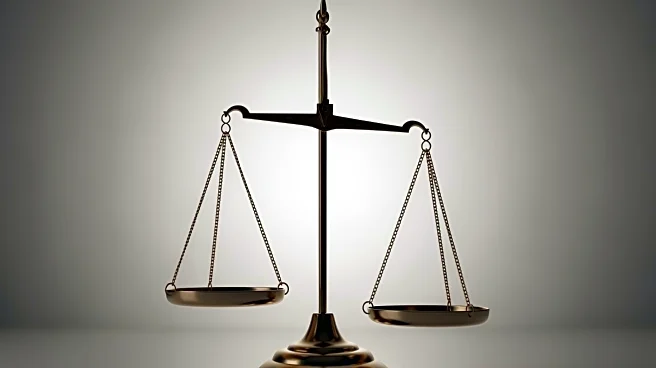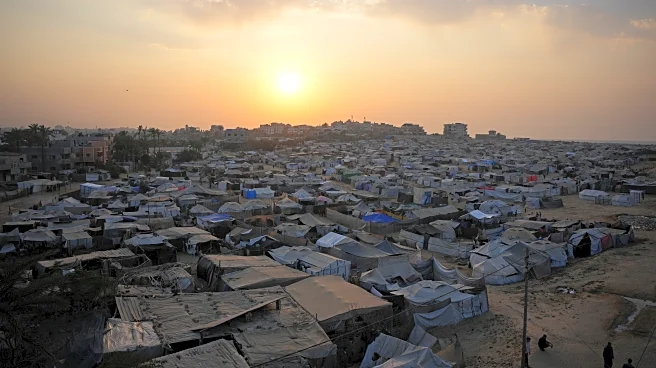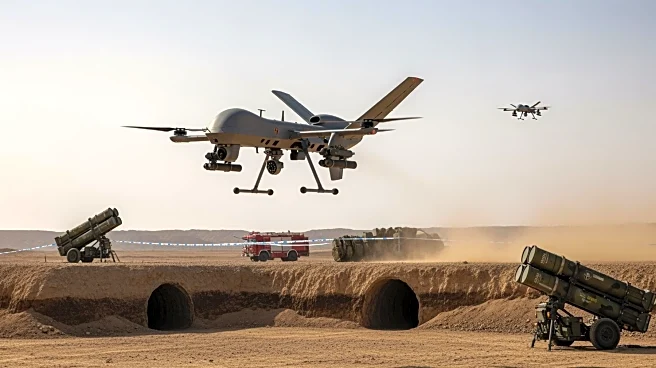What's Happening?
The United States has assumed control over the coordination of humanitarian aid deliveries to Gaza, a role previously managed by Israel's COGAT unit. This shift was finalized at the U.S. command center
in Kiryat Gat, which oversees the implementation of the Gaza cease-fire. The command center includes representatives from approximately 40 countries and international organizations. Despite the inclusion of Israeli officials in discussions, the U.S. now makes the final decisions regarding the type and amount of aid allowed into Gaza. The transition has been described as chaotic and indecisive, with bureaucratic delays and confusion reported by officials involved. President Trump's administration has proposed a plan to establish up to 16 'safe communities' within Gaza, where vetted Palestinians would receive food, medical care, and protection, while Hamas would be disarmed and excluded from future governance.
Why It's Important?
This development marks a significant change in the management of Gaza's post-war recovery, with the U.S. taking a leading role and Israel stepping back to a supporting position. The shift could impact the dynamics of international aid and reconstruction efforts in Gaza, potentially altering the balance of power and influence in the region. Aid agencies have expressed concerns that the new model may repeat past failures, such as those associated with the Gaza Humanitarian Fund, which allegedly contributed to civilian casualties during IDF operations. The proposed 'safe communities' plan could reshape the governance and security landscape in Gaza, affecting the lives of its residents and the political future of the region.
What's Next?
The U.S. administration has yet to clarify how the proposed increase in humanitarian aid will be implemented or whether Israeli restrictions will be lifted. The plan to create 'safe communities' faces challenges, including the disarmament of Hamas and the establishment of long-term governance structures. The ongoing bureaucratic delays and funding issues at the command center may hinder the effective implementation of aid and reconstruction plans. Stakeholders, including aid agencies and international organizations, are likely to continue voicing concerns and pushing for more transparent and effective strategies.
Beyond the Headlines
The shift in aid coordination could have broader implications for U.S.-Israel relations and the geopolitical landscape in the Middle East. The exclusion of Hamas from future governance in Gaza raises ethical and political questions about the representation and rights of the Palestinian population. The establishment of 'safe communities' may lead to long-term changes in the social and economic fabric of Gaza, influencing migration patterns, community structures, and regional stability.












